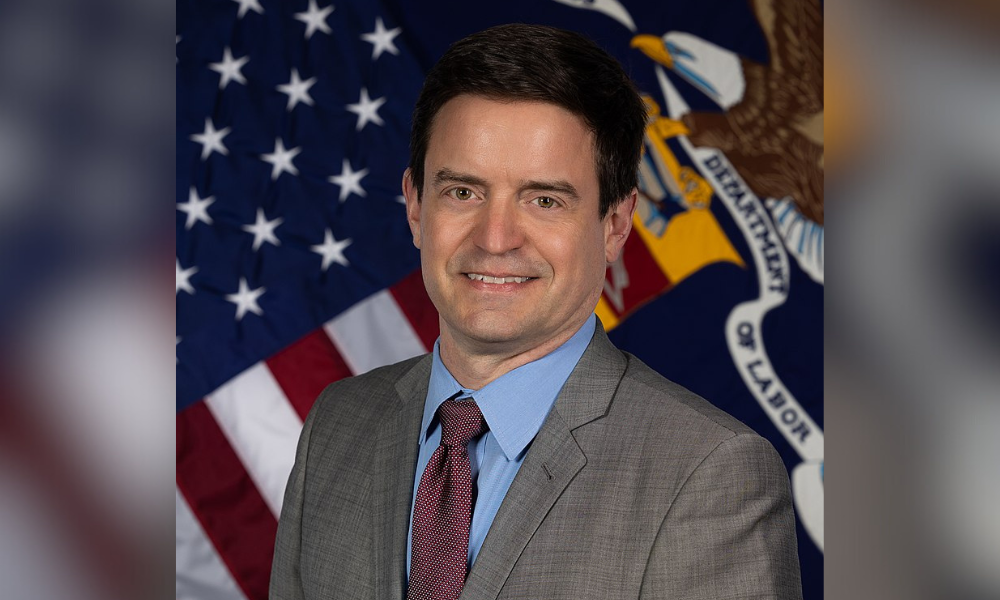Doug Parker on hazardous chemicals, leading indicators and workplace violence

The head of the Occupational Safety and Health Administration (OSHA) in the United States talked about three key topics at the annual American Society of Safety Professionals conference that are of significant interest to Canadian safety professionals trying to tackle some of the biggest challenges in the profession.
Doug Parker is the Assistant Secretary of Labor for Occupational Safety and Health, and in San Antonio this week he discussed the latest on the US efforts to comply with the Globally Harmonized System of Classification and Labelling of Chemicals, as well as plans to create tools to track leading indicators, and the rise of workplace violence.
"We're always mindful of how we can expand health and safety, progress health and safety, as well as being mindful of the need to address the confusion that can occur from a patchwork of rules,” says Parker.
The United States, Canada, and GHS
Those who do not deal with chemicals and hazardous materials on a regular basis may not be aware of the Globally Harmonized System of Classification and Labelling of Chemicals, or GHS, a treaty developed by the United Nations to create a system of hazard communication that can be adopted by countries around the world. The idea is to create rules for classifying the hazards of chemical products, and develop standard communication tools, such as format and content for safety data sheets.
Canada recently updated the Hazardous Products Regulations earlier this year to meet the seventh revised edition of the GHS.
Parker says, "we're working on rulemaking right now that will better align the United States warning and formation system on hazardous chemicals with the global harmonization efforts." He says the US is in the late stages of the rulemaking, calling it “a pretty mature process” that he says once complete will look “more like the vision of a uniform system.”
As for when an announcement will be made, “I don't have a timeline. But I'm hopeful it's more likely to get out sooner than most."
Leading indicator tools
Another initiative undertaken by OSHA is the creation of tools that monitor and track leading indicators. “We are looking to build a library of leading indicators that employers can use by gathering best practices,” says Parker, “and we can really start to have progressive and effective tools that are widespread throughout all industries."
The trend towards leading indicators is picking up steam, and depending on the nature of the tools, it’s likely Canadian safety professionals will be able to borrow the ideas used to create the tools, if not use the same tools created by OSHA.
Parker challenges safety leaders to "think broader than the way you're currently thinking, or you've traditionally thought about health and safety," and says the intent behind the initiative is to develop a deeper connection with frontline workers based on trust and understanding.
"Open your ears, listen to workers, who may not be like you, and find ways for you to find common ground and solutions,” explains Parker, “really hear what their concerns are and take into account how their circumstances, the trauma they've been bringing with them will make your health and safety program more effective.”
Addressing workplace violence
A final overarching topic from Parker’s address to thousands of American safety professionals, relates to what anecdotally seems to be increasing instances of violence in the workplace. “You can't turn on the news in a week without seeing some kind of shooting at school or office, or some other kind of workplace,” suggests Parker. And while the Canadian experience may not be as frequent or dramatic, it is still happening.
Parker says workplace violence has traditionally been thought of as customer or patient violence, and uses hospitals as an example, which is an issue Canadian healthcare professionals have been grappling with.
In healthcare settings, Parker says look at “staffing structure, risk assessment with patients, line of sight, panic buttons, barriers, systems like that." He also adds in other settings, “it could be just hardening external security, hardening access, things like that."
He also notes mental health issues can’t be ignored and says, “we shouldn't be quite so afraid to look at warning signs,” noting "there's always somebody after the fact who saw the signs, right."
The phrase ‘safety is safety’ was used often this week in San Antonio, and it rings true on both sides of the border.





